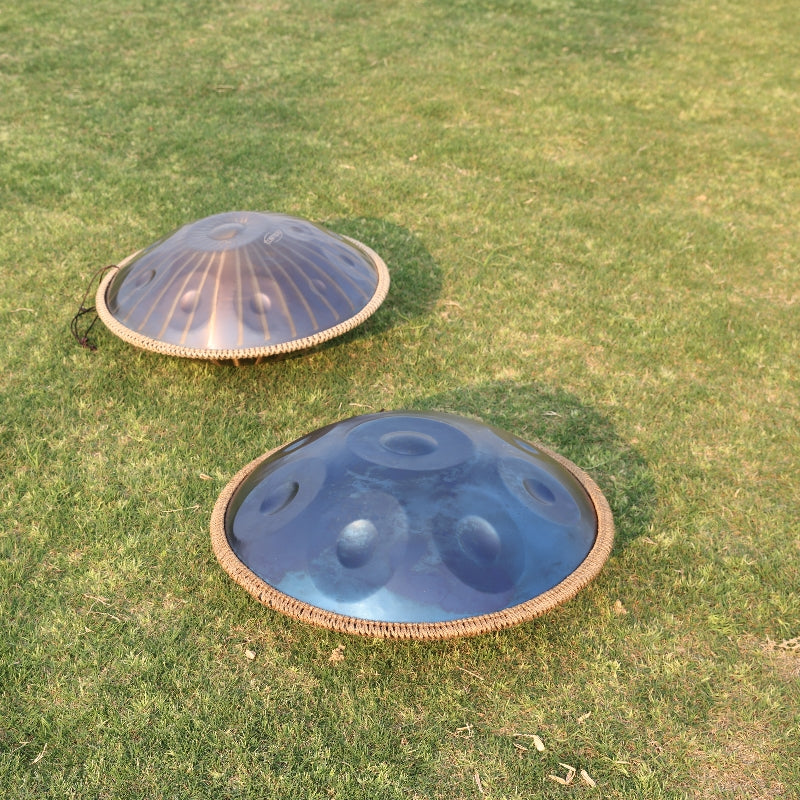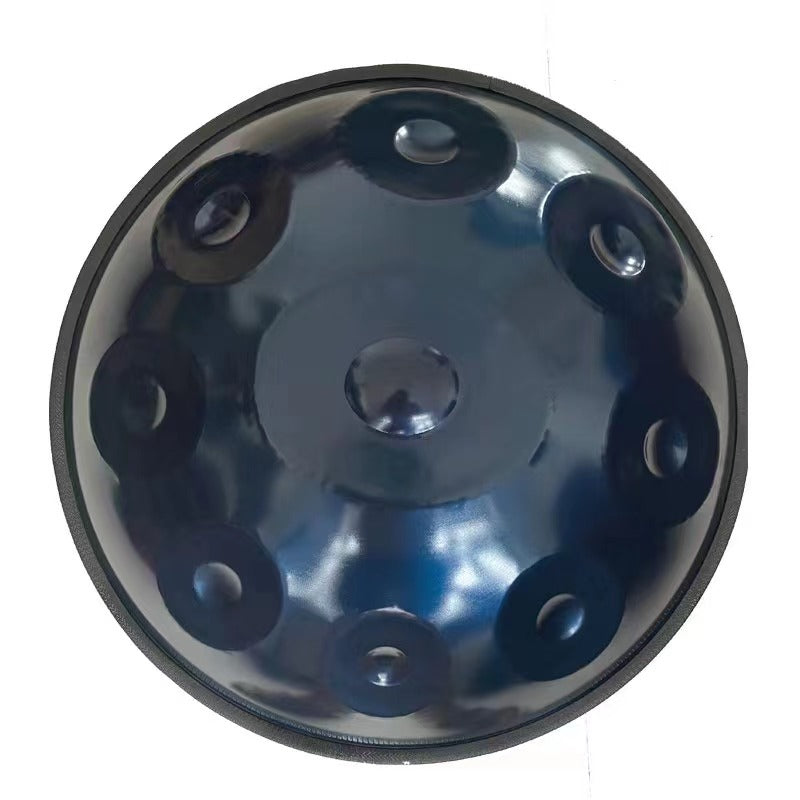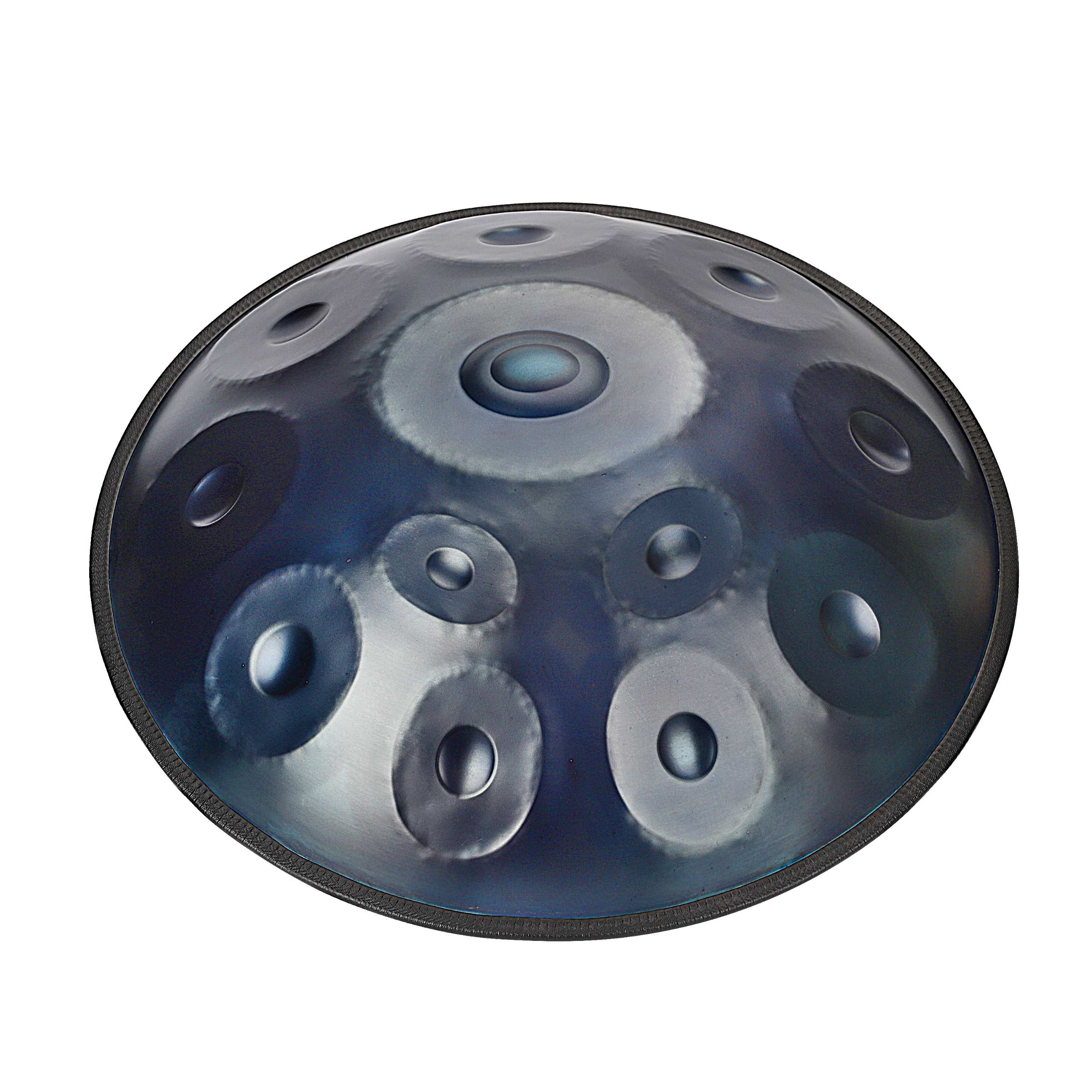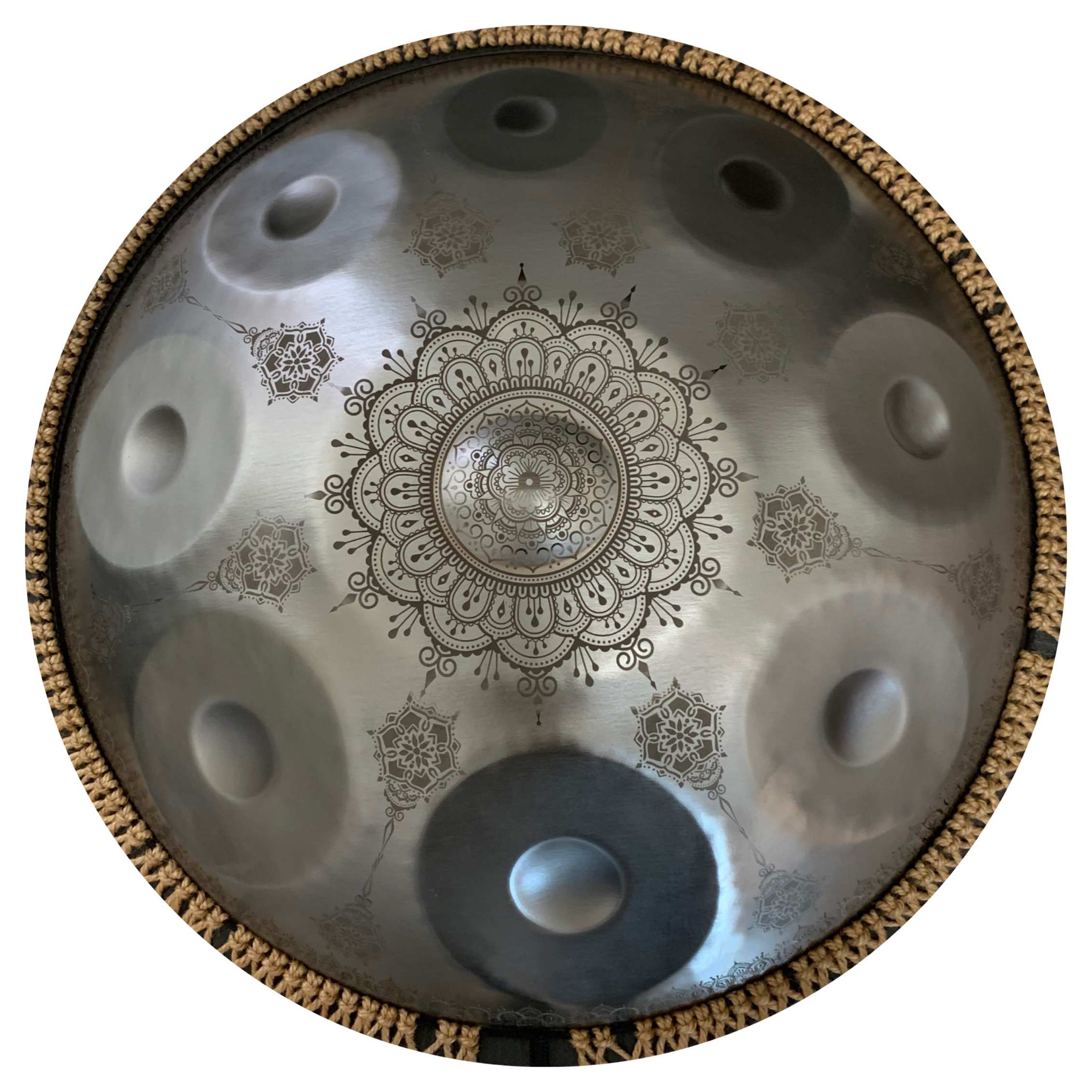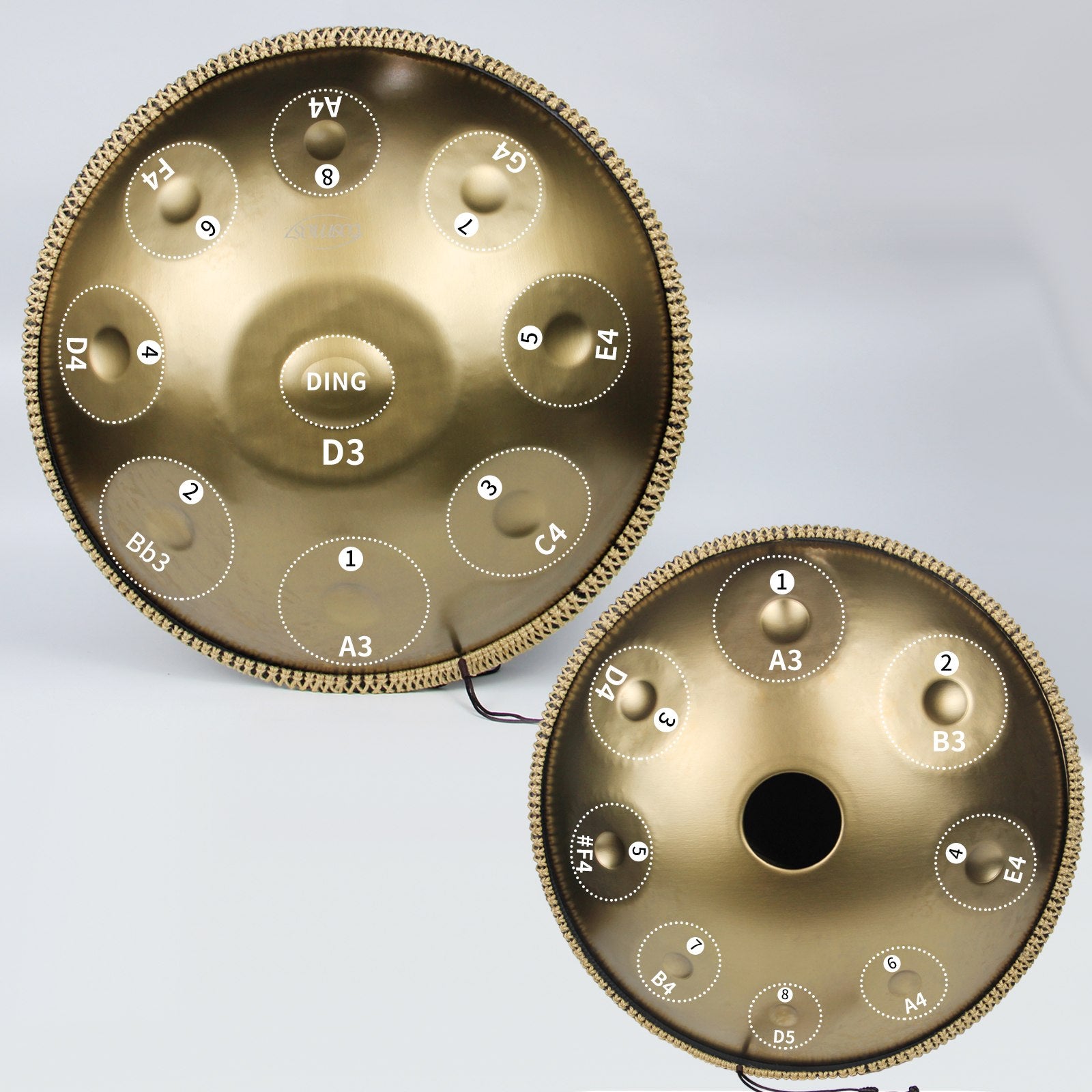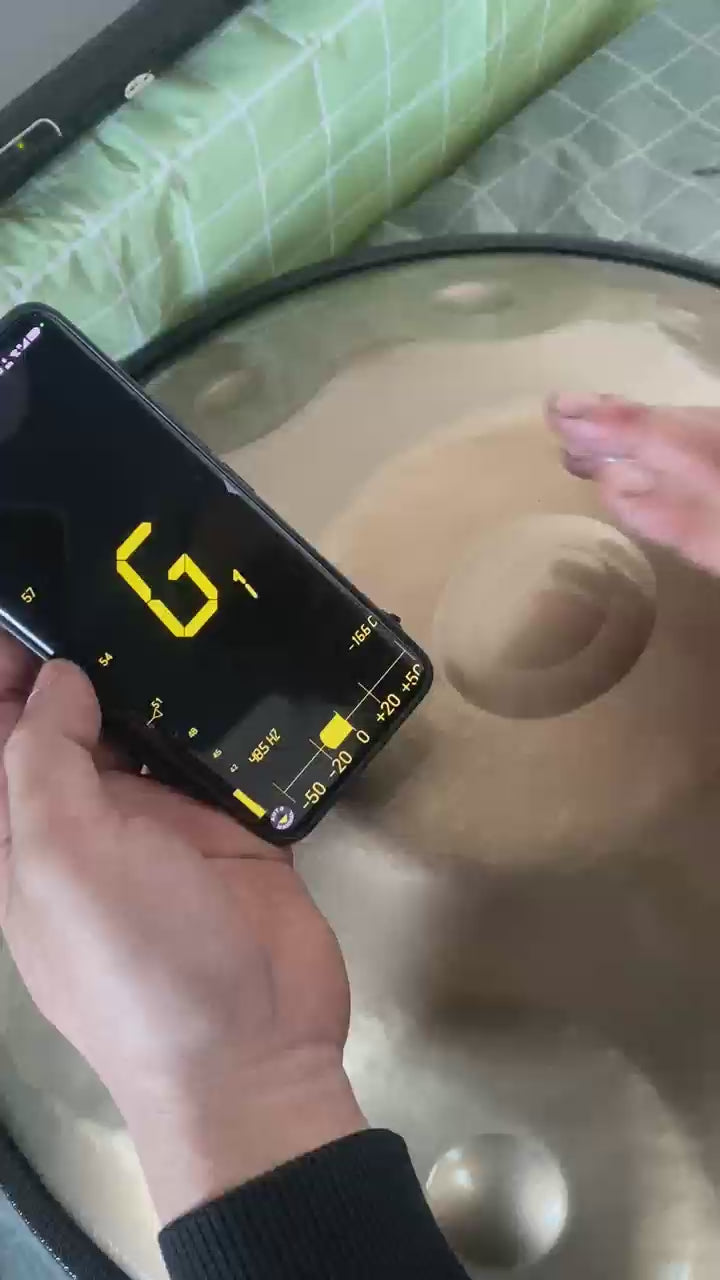How does a handpan work?
- A handpan uses carefully tuned steel to create melodic sounds.
- It has multiple notes arranged in a circle around a central note.
- Striking these notes with your hands produces harmonious tones through vibrations.
- The design and tuning of the handpan result in rich and soothing sounds.
- Hang drums usually have one set of notes, making it easy for anyone, even without musical experience, to make lovely music with them.
How does a handpan make a sound?
A handpan produces sound when you strike its surface with your hands. Craftsmen tune steel carefully to make the handpan. They arrange many notes in a circle around one central note. When you hit these notes, they vibrate and make harmonious, resonant sounds.

The design and precise tuning of each note contribute to the handpan's unique and soothing sound.
What is the diatonic scale of a handpan?
- The diatonic scale of a handpan is a set of notes that fit a certain key. It follows a pattern of whole and half steps, like what you hear in major or minor scales.
- A typical handpan might not have a full diatonic scale but will have a selection of notes that fit within one.
- For example, a handpan in D minor might include the notes D, E, F, G, A, C, and D, creating a minor scale.
- The maker tunes the handpan drum, determining the notes and scale it will have. Tuners can customize this tuning to generate various musical feelings and atmospheres.

Does the handpan only work by hand?
Tuners design the handpan for hand playing and its unique sounds with gentle hits. Players can also use soft mallets, but be cautious as they can alter the tone and potentially harm the instrument if not used carefully. The traditional method involves using your hands, fingers, and palms to hit and play the notes. This method provides more control over volume and adds expression to the music.
Is handpan hard to learn?
- The handpan is easy for beginners because it has a simple layout and calming sound, making it easy to learn.
- You don't need extensive musical training to create pleasant tones on the hangdrum.
- You will gain proficiency in using it, maintaining a steady rhythm, and playing more challenging songs.
- Nowadays, you can easily find video lessons that are affordable and offer great value for learning. They also help you manage your learning time conveniently.
- Taking Mr. David Urban's free course is highly recommended for those interested in learning the handpan.
How does handpan work at 440hz or 432hz?
Tuners can choose between 440 Hz or 432 Hz for a handpan's tuning, matching the frequency of the A note above middle C (A4). Here's how they do it:
When making a handpan drum, the craftsman tunes each note by gently hitting the steel to get the right pitch. Tuners can adjust this tuning to the standard concert pitch (440 Hz) or to an alternative pitch such as 432 Hz.
Frequency Difference: The difference between 440 Hz and 432 Hz is subtle but perceptible. People say that instruments tuned to 432 Hz produce a slightly warmer and more calming sound than the brighter, sharper tone of 440 Hz.
Some musicians like 432 Hz tuning because they think it sounds more natural and fits well with the body, but it's a personal choice. Most musical settings widely use 440 Hz as the international standard for concert pitch.
Regardless of the chosen tuning, tuners adjust all notes on the handpan instrument in relation to the base frequency (either 440 Hz or 432 Hz). This ensures that the instrument maintains harmony within its scale.
In summary, when creating a handpan, tuners decide on either 440 Hz or 432 Hz tuning, which affects how the instrument sounds.

